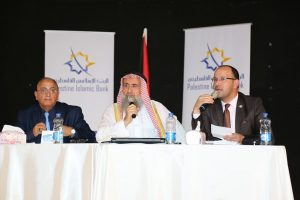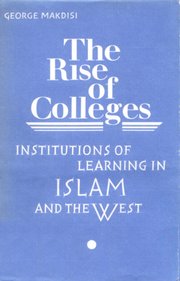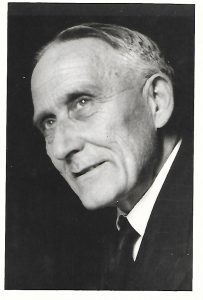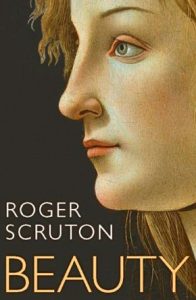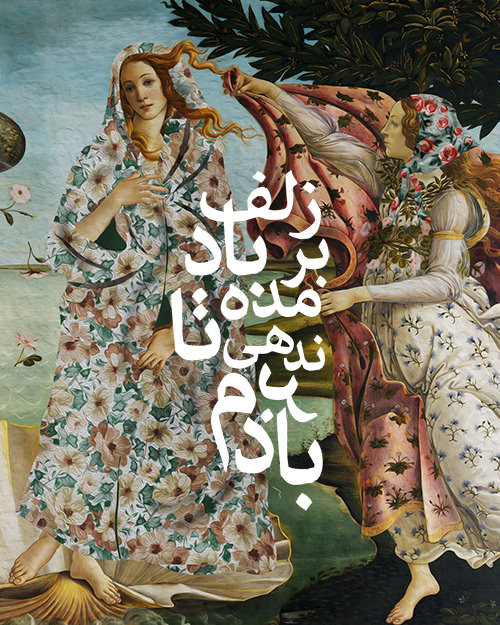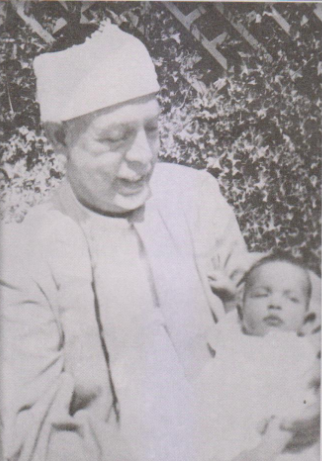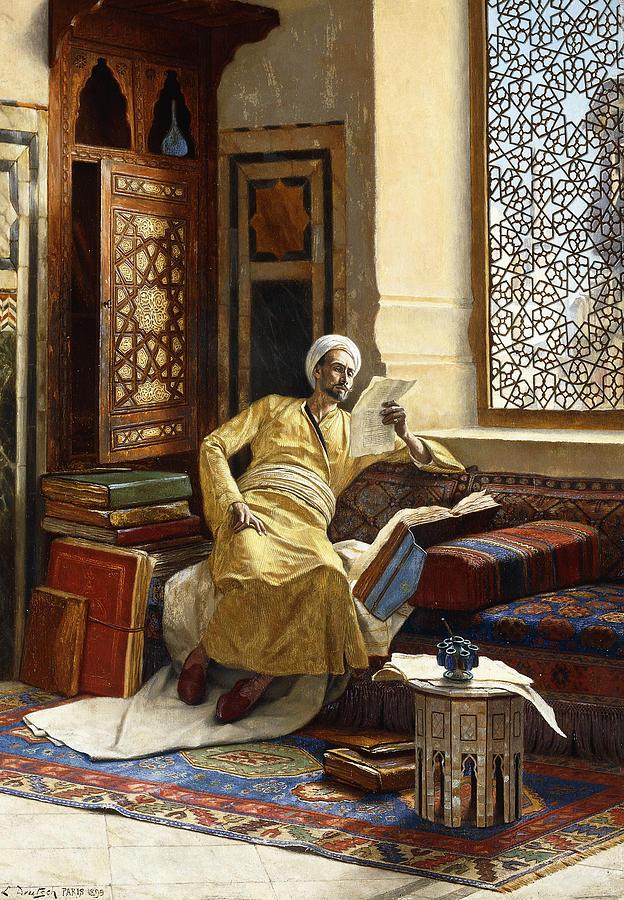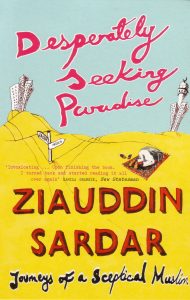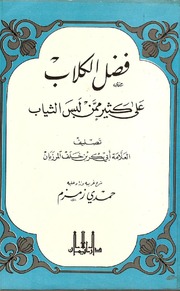The age of Aisha bint Abu Bakr, may God be pleased with her and her father, at the time of her marriage to the Prophet Muhammad PBUH is one of the thorny issues in modern Islam, used as one of the main talking points against Islam by Islam’s detractors. How could God’s Prophet, a widower over the age of 50, accept to engage a 6-year-old and go on to wed her when she was 9?
Even Western-educated Islamic scholars like Yasir Qadhi and Jonathan Brown find themselves unable to critique the official narrative because they follow the traditional methodologies of the field of hadith, in which the authenticity of a hadith’s chain of narrators is the most important fact about it. Since Aisha’s age is explicitly stated by Aisha herself in Sahih al-Bukhari and Muslim, most scholars consider themselves unable to critique it. While many Muslims are satisfied by the commonly accepted narrative, it remains a fact that for many non-Muslims the Prophet’s marriage to a 9-year-old remains an insurmountable barrier to them accepting Islam as a respectable doctrine. And what a waste if the historical evidence shows us that the Prophet did not actually marry a 9-year-old, but a young woman who was almost 18!

Dr. Salah al-Din al-Idlibi
A new challenge to the traditional narrative of Aisha’s marriage comes from the Syrian hadith scholar Dr. Salah al-Din al-Idlibi, an expert in the new field of matn criticism. He has taught as a professor at the prestigious al-Qarawiyyin University in Morocco, Imam Muhammad bin Saud University in Riyadh, College of Islamic and Arabic Studies in Dubai and al-Makkah al-Maftuha University in Jeddah. Unlike traditional hadith criticism, which focuses almost solely on verifying the trustworthiness of the people who transmit a certain hadith, matn criticism compares the contents of hadith narrations to the contents of other hadith narrations and any other available historical evidence in order to try to reconstruct the objective historical reality of the event that the hadith describes. We know that even Imam al-Bukhari used this method to reject authentic narrations that clearly conflicted with observed reality (see Dr. Jonathan Brown’s 2008 article “How We Know Early Ḥadīth Critics Did Matn Criticism and Why It’s So Hard to Find” Islamic Law and Society vol. 15, no. 2). The field of matn criticism (matn means the text of the hadith, as opposed to its chain of narrators) expands and standardizes this method of analysis that previous scholars only rarely engaged in.
According to Dr. al-Idlibi’s study of the issue of Aisha’s age, while the hadith in which she mentions her age as 9 at the time of her wedding is clearly authentic, there is a great detail of evidence that contradict her statement, and in his judgment, the evidence is sufficient for us to conclude that Aisha was simply mistaken due to the fact that she made that statement in her old age. For one reason or another, Aisha, in her old age, had the mistaken belief that she was 9 at the time of her wedding. Since we only have her word for it (there is no other evidence that backs up her statement), and since all the other evidence from many different sources point to her actually having been closer to 18, it is concluded by Dr. al-Idlibi that while the hadith is an authentic narration, since it is contradicted by historical reality, it must be rejected in favor of alternative theories.
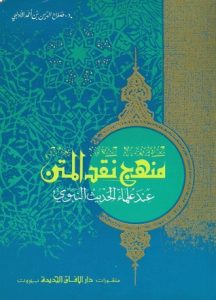
The cover of Dr. al-Idlibi’s 1983 book Manhaj Naqt al-Matn (The Methodology of Matn Criticism)
Below is a translation of Dr. al-Idlibi’s 2018 paper (published on his website at idlbi.net) in which publishes his research on this matter and responds to the objections of other scholars. [link to the original Arabic PDF]
This translation is only a rough draft. I am making it public since I believe this will be more beneficial than waiting many months before I can get to rewriting it (since I am busy with other projects). Translator’s notes are in double square brackets [[like this]] due to the fact that the author uses square brackets in some places. I have also added some notes as footnotes (there are no footnotes from the author). I will need to review the translation to make sure all of my notes are separated in double square brackets, because there might a few places where I added notes in other ways.
Start of Translated Paper
The Age of the Lady Aisha On the Day of Her Marriage Contract and the Day of Her Wedding
The Hadiths on Calculating the Age of the Lady Aisha the Day of Her Marriage and the Day of Her Wedding
by Dr. Ṣalāh al-Dīn bin Aḥmad al-Idlibī
In the Name of Most, Most Compassionate, Most Merciful
Praise be to God in blessedness and abundance, as He desires and pleases, and praise be to God by whose bounty all good deeds are completed, O God, help this matter come to a good conclusion, and help us finish in goodness, by Your bounty and grace O Most Gracious among the gracious.
Hadith has come to us from the Prophet PBUH that he concluded a marriage contract involving Aisha, may God be pleased with her, when she was six years old, and that he married her when she was nine. Is this hadith sound when it comes to its isnād [chain of narrators] and matn [content]? A study is indispensable.
I had read an article on this topic written by a researcher in which he made efforts to prove this hadith to be unsound both in terms of its isnād and its matn. I decided that it was possible to benefit from his article for what it contained of useful research ideas while pardoning its weak points, in order to work towards reaching a correct conclusion based on sound evidence, by God’s leave, because of the importance of elucidating the correct perspective on this matter of Prophetic biography and hadith. This is a study supported by evidence on Aisha’s birth and the calculation of her age at the time of her marriage contract with the Prophet and at the time of her wedding. There are two opinions on this matter:
The first and most famous opinion: It is the opinion that he concluded the marriage contract when she was six and wed her when she was nine, relying on what is mentioned in Sahih al-Bukhari and other collections. This implies that she was born six years after the start of the Revelation.
Abū Nuʿaym [al-Iṣfahānī, d. 1038 CE, Persian hadith scholar and historian, student of al-Ṭabarānī and teacher of al-Khaṭīb al-Baghdadī] in his Maʿrifat al-Ṣaḥāba that Aisha was six then [at the conclusion of the marriage contract].
Ibn ʿAbd al-Barr [d. 1071, an Andalusian Mālikī scholar] says in al-Istīʿāb:
The Prophet PBUH married her [concluded the marriage contract] in Mecca before the hijra when she was six years old, and some say seven, and consummated the marriage with her in Medina when she was nine. I do not know of any disagreement on this matter. The Prophet died when she was eighteen years old.
Ibn Ḥajar [d. 1449 CE, an Egyptian hadith scholar] says in Fatḥ al-Bārī [his commentary on Sahih al-Bukhari]:
She was born in the age of Islam, eight years or so before the hijra. The Prophet PBUH died when she was about eighteen years old.
The second opinion: This opinion is that the Prophet PBUH concluded the marriage contract when she was fourteen years old and wed her when she was seventeen, approaching eighteen. This would mean that she was born four years before the Revelation. The writings of Ibn Isḥāq [d. 770 CE, a biographer of the Prophet] and al-Ṭabarī [d. 923 CE, a Persian historian and Islamic scholar] point toward this, as will be mentioned in the fourth and fifth section below on the evidence behind the second opinion.
Ibn ʿAbd al-Barr says in his book al-Durar fī Ikhtiṣār al-Maghāzī wa-l-Siyar when recounting the names of the earliest Muslims: “And Asmāʾ bint Abū Bakr, and ʿĀʾisha bint Abū Bakr al-Ṣiddīq while she was a little girl.” This goes against what he mentioned in al-Istīʿāb.
Evidence for the first opinion
Al-Bukhārī, Muslim and others narrate through various transmitters from Hishām bin ʿUrwa, from his father, from Aisha, that the Prophet PBUH married her when she was six years old and wed her when she was nine. Muslim narrates it through Maʿmar, from al-Zuhrī, from ʿUrwa, from Aisha. Ibn Ḥanbal and Muslim also narrated through al-Aswad bin Yazīd al-Nakhaʿī from Aisha. There are also other chains that go back to her for this hadith.
The word tazawwajahā can be used to mean the concluding of a marriage contract, and this is what is meant in this hadith.
This hadith’s chain of narrators is authentic, so they are mistaken who think that this hadith only comes to us through Hishām bin ʿUrwa and that it might be his mistake or delusion.
Ibn Abī Shayba [d. 849 CE, an early Persian scholar of hadith and hadith collector] narrate through al-Aswad from Aisha that the Prophet PBUH wed her when she was nine and that he died when she was eighteen.
Abū ʿUwāna [d. 928 CE, a Persian hadith transmitter] narrates in al-Mustakhraj from Urwa, from Aisha, that Prophet PBUH concluded the marriage contract with her when she was six or seven and that he wed her when she was nine while she still had her toys, and that he died when she was eighteen.
This narration has a supporting piece of evidence in a hadith of [the Companion] Ibn Masʿūd which might be thought to affirm Aisha’s hadith above, but it is actually unauthentic. Al-Tirmidhī narrates in al-ʿIlal al-Kabīr from Yaḥyā bin Aktham from Yaḥyā bin Ādam from Isrāʾīl bin Yūnus from his grand father Abū Isḥāq from Abū ʿUbayda from his father ʿAbdullāh bin Masʿūd that he said: “The Prophet PBUH concluded the marriage contract with Aisha when she was six years old and consummated the marriage with her when she was nine, and he passed away when she was eighteen.” Al-ʿUqaylī [d. 934, a hadith scholar] mentions this narration in al-Ḍuʿafāʾ [his collection of unauthentic narrations] from Muḥammad bin Mūsā al-Balkhī from Mālik bin Sulaymān al-Harawī from Isrāʾīl. And al-Ṭabarānī narrates it in al-Kabīr from Muḥammad bin Mūsā bin Ḥammād al-Barbarī from ʿAbd al-Raḥmān bin Ṣāliḥ al-Azdī from Yaḥyā bin Ādam from Shurayk from Abū Isḥāq from Abū ʿUbayda from Ibn Masʿūd.
In the first chain [al-Tirmidhī’s] there is Yaḥyā bin Aktham, who has been declared a weak [untrustworthy and unsound] transmitter [ḍaʿīf], for he steals hadiths [he takes a hadith and claims to have heard it directly from a reliable transmitter when he has not]. In the second chain [Al-ʿUqaylī’s] is Muḥammad bin Mūsā al-Balkhī, who I could not find in the biographical dictionaries. In it there is also Mālik bin Sulaymān al-Harawī, who is weak. In the third chain [that of al-Ṭabarānī] there is Muḥammad bin Mūsā bin Ḥammād al-Barbarī (d. 294 AH), whom al-Daraquṭnī declared non-authentic (laysa bi-l-qawī). In it there is also ʿAbd al-Raḥmān bin Ṣāliḥ al-Azdī, who was from Kūfa but resided in Baghdad. He was considered trustworthy and died in 235 AH. In the chain there is also Yaḥyā bin Ādam (d. 203 AH), who is another Kūfan. In the chain there is also Shurayk bin ʿAbdullāh, a transmitter who has a trustworthy character but who erred often and engaged in tadlīs. He died in 177 AH. And in both chains there is Abū Isḥāq al-Sabīʿī, who is a trustworthy Kūfan who also engages in tadlīs. In the chain there is also Abū ʿUbayda who is trusted but who never heard anything from his father. Therefore this chain is weak.
Additionally, Imam al-Bukharī considered narrations from Isrāʾīl bin Yūnus from his grand father Abū Isḥāq maʿlūl [problematic and questionable]. It is also mentioned to be this way in al-ʿIlal al-Kabīr of al-Tirmidhi. It is also mentioned thus in al-ʿUqaylīs al-Ḍuʿafāʾ al-Kabīr but without giving a citation for his source.
Therefore since this hadith of Ibn Masʿūd is weak, it is incorrect to use it as support for Aisha’s hadith.
The above is what I had written about the authenticity of the chains leading to Ibn Masʿūd’s hadith. Then I ran into commentary by the honorable brother Sheikh Ḥātim al-ʿAwnī, may God preserve him in goodness and good health, in which he mentions two other chains leading to Ibn Masʿūd’s hadith in the Sunan of Ibn Māja and al-Sunan al-Kubrā of al-Nasāʾī. According to this new information, I will update my judgment of the hadith as follows:
Al-Tirmidhī reports in al-ʿIlal al-Kabīr and al-Nasāʾī in al-Sunan al-Kubrā from two narrators, from Yaḥyā bin Ādam from Isrāʾīl bin Yūnus from his grandfather (Abu Ishaq) from Abu Abaydah from his father (Abdullah ibn Masud) that he said: The Messenger of God, peace and blessings of God be upon him, married Aisha when she was a girl of six years, and consummated the marriage with her when she was a girl of nine years, and he passed away when she was a girl of eighteen. Ibn Maja and al-Uqayli narrated in the al-Du`afaa’ (their collections of unauthentic narrations) from two other chains from Israil. Al-Uqayli also reports it in al-Du`afaa’ from Abdullah bin Rajaa’ from Israel in a broken chain (mursal) that does not mention “from Abdullah ibn Masud”.
Al-Tabarani narrates it in al-Kabir from Muhammad bin Musa bin Hammad al-Barbari from Abdul Rahman bin Salih al-Azdi from Yahya bin Adam from Shurayk from Abu Ishaq from Abu Ubaydah from Ibn Masud. (Al-Tabarani mistook Muhammad bin Musa bin Hammad al-Barbari when he said “from Yahya from Adam from Shurayk” since he is not reliable (qawi), as al-Daraqutni has said, and he went against two other hadith collectors who narrated the hadith using the chain “from Yahya from Adam from Israil”.
And al-Nasāʾī narrates it in al-Sunan al-Kubrā from Qutayba bin Said from Ubthur from Mutrif bin Turayf al-Kufi from Abu Ishaq from Abu Ubayda from Aisha along the same lines. [Qutayba bin Said is from Balkh and reliable (thiqa). He died in 240 AH. Ubthur bin al-Qasim al-Kufi is reliable (thiqa) and died in 178 AH. Mutrif bin Turayf al-Kufi is reliable and died in 142 AH].
[Abu Ishaq al-Sabi`i Amr bin Abdullah bin Ubayd is a Kufan and reliable but would engage in
tadlis and his memory changed near the end of his life. He was born in 32 AH and died around 127 AH. Abu Ubayda Aamir bin Abdullah bin Masud is a Kufan and mostly reliable (fihi lin) died in 81 AH, and did not hear any narrations from his father due to his young age at the time of his father’s death]. Therefore this is a weak chain.
In summary, regarding the chains going back to Abu Ubaydah bin Abdullah bin Masud:
The chain of Shurayk bin Abdullah from Abu Ishaq is a mistake of the hadith collector.
As for the chain of Israil from Abu Ishaq, regarding it al-Bukhari said, as is mentioned in al-Ilal al-Kabir of al-Tirmidhi:
"This is an error. The chain is instead Abu Ishaq from Abu Ubaydah that the Prophet PBUH married Aisha..." This is how they mention Israil's narration(s?) from Abu Ishaq, and they say: "From Abu Ubaydah from Aisha" also.
The chain of Mutrif bin Turayf from Abu Ishaq from Abu Ubaydah from Aisha is the one that correctly mentions the Companion names, and if it is so then the chains of Abu Ubayda go back to Aisha.
Since the narrator that narrates from Ibn Masud is unreliable and problematic, it is incorrect to strengthen Aisha’s hadith by it.
Evidence for the second opinion
1. Aisha is younger than her sister Asmaa’ by ten years. Asmaa’ was born 27 years before the hijra, or 14 years before the start of the Revelation. This means that Aisha was born four years before the start of the Revelation.
Ibn Abd al-Barr in his al-Isti`aab and Ibn Asaakir in Tarikh Dimashq narrate from two chains from al-Asma`i from Ibn Abi al-Zinad that he had said: “Asma bint Abu Bakr is about ten years older than Aisha.” And this is a good (jayyid) isnad.
And Abu Nu`aym says in his Ma`rifat al-Sahaba in his article on Asmaa’: She was born before the start of the Islamic calendar by 27 years, and she died in 73 AH in Mecca days after her son Abdullah bin al-Zubayr was killed when she was 100 years old.
What corroborates this narration with regards to knowing Asmaa’s year of birth is what Abu Nu`aym narrates from her, that she had said: “I saw Zayd bin Amr bin Nufayl with his back to the Ka`ba saying: “O gathering of Quraysh, none among you follows Ibrahim’s religion except I.” Zayd had died when Quraysh was rebuilding the Ka`ba before the Revelation came to the Messenger by five years, as Ibn Sa`d mentions in al-Tabaqat from Saeed bin al-Musayyab, meaning 18 years before the hijra. That makes her age 9 at the time she heard him (i.e. Zayd bin Amr). This makes sense, since one who remembers such details cannot be much younger than nine.
Ibn al-Athir says in Usud al-Ghaaba:
Abu Nuaym says: "She was born before the calendar by 27 years." Ibn Abd al-Barr says in al-Isti`ab: "Asmaa' died in Mecca in the month of Jamadi al-Ula in the year 73 AH. She died when she had reached 100."
2. Al-Bukhari narrates from Aisha, may God be pleased with her, that she had said:
The verse "But the Hour is their appointment [for due punishment], and the Hour is more disastrous and more bitter." was sent down upon Muhammad, peace and blessings of God be upon him, while I was a little girl, playing. The suras al-Baqara and al-Nisaa' had not been sent down until I was with him.
Al-Qurtubi says in his tafsir: Ibn Abbas said: “Between the revelation of this verse and the Battle of Badr passed seven years.” If that is so, this means that it was sent down before the hijra by five years, and eight years after the start of the Revelation.
Ibn Sida says in al-Muhkam and Ibn Manzur in Lisan al-Arab: al-Jariyah: A young women (fatiyyah). A fatiyya is another word for al-shabba (a pubescent woman). It appears that they use this word to refer to a girl at the very beginning of her puberty.
So how old was Aisha when 54:46 was revealed, which was revealed eight years after the Revelation?
According to the first opinion above she would have been four years old. A four-year-old is never referred to as a jariyah. Therefore the conclusion from this is that the first opinion is wrong, while according to the second opinion she would have been 12 at the time of this revelation, and this is what fits the meaning of jariyah as used in the language.
3. Al-Bukhari narrates from Aisha that she has said:
I never knew my parents except as Muslims (i.e. she had no memory of their being pagans due to being born so close to their conversion to Islam). Not a day would pass except that the Messenger of God, peace and blessings of God be upon him, would come to us at the two extremities of the day, early and late. Once the Muslims started to face trials, Abu Bakr left toward Abyssinia, until he reached Barak al-Ghimad and met Ibn al-Dughna..."
These two narrations are clues toward two things:
The first is that a child cannot comprehend her parents having a religion different from the religion of the people around them before the age of four. If Aisha had been born four years after the Revelation, and her first comprehension of her religious environment was at the age of eight, then her saying “I never knew my parents except as Muslims” is a useless statement since it is well known that Abu Bakr converted early and that Umm Ruman (Aisha’s mother) had also converted early in Mecca as Ibn Sa`d mentions.
But if she had been born four years before the Revelation, and she only started to be aware of her religious environment at the first year of the Revelation, then this statement is a useful statement: Once she became aware of her surroundings, both her parents were Muslim (rather than just Abu Bakr).
This is a clue that suggests she was born around four years before the Revelation, which is what the other clues suggest.
And the second clue is that when she says “Once the Muslims started to face trials, Abu Bakr left toward Abyssinia”, the passage expresses that this happened after she became aware of her parents being Muslim. There is in this a suggestion that she was able to comprehend her surroundings when this event took place, and we know that the migration of the Companions to Abyssinia took place near the middle of the fifth year of the Revelation, and their second migration took place at the end of the fifth year and the beginning of the sixth year.
Had Aisha been born in the fourth year of the Revelation, she would not have able to understand what was going on at the beginning of the sixth year. But if she had been born four years before the Revelation, she would have clearly comprehended this events.
4. Ibn Ishaq says in his biography of the Prophet (sira) when mentioning the names of those who converted to Islam the earliest:
Some people of the Bedouin tribes converted, among them Said bin Zayd bin Amr bin Nufayl, and his wife Fatima bint al-Khattab, and Asmaa' bint Abu Bakr, and Aisha bint Abu Bakr while she was a little girl... then God Almighty ordered His Messenger, peace and blessings of God be upon him, to proclaim his message publicly and to call people and invite them to God Almighty. Perhaps he had been secretive until he was ordered to make his message public, so that he spent some years after the Revelation until the command came: "Then declare what you are commanded and turn away from the polytheists"
Ibn Kathir transmitted some of this text, paraphrasing it, saying:
Ibn Ishaq said: God ordered His Messenger PBUH three years after the Revelation to proclaim what He had order him, and to be patient toward the hurtful things the polytheists did.
Ibn Ishaq’s words mean that Aisha was among those who converted to Islam during the period of the Secret Call after the Revelation (i.e. the first three years), and that she was a little girl at this time. If that period lasted three years, then perhaps she attended some of the secret gatherings during that latter days of that period. According to the saying that she was born four years after the Revelation then this does not fit at all. But according to the second opinion (her being born four years before the Revelation), then her age at that time would have been six or seven. Perhaps Ibn Ishaq mentioned her among the earliest Muslims due to the stature of her father Abu Bakr, may God be pleased with him, and because of Ibn Ishaq’s desire to mention her alongside her sister Asmaa’ who was ten years her senior.
5. Al-Tabari says in his Tarikh:
Abu Bakr married during the pre-Islamic period Qutayla bint Abd al-Uzza and from this marriage Abdullah and Asmaa' were born to him. He also married Umm Ruman bint Amir during the pre-Islamic period and from this marriage Abd al-Rahman and Aisha were born to him. All of these four children were born to his two wives that we mentioned in the pre-Islamic period.
Al-Tabari explicitly states that Abu Bakr married his two wives during the pre-Islamic period. But there is no use in him mentioning “in the pre-Islamic period” at the end of the passage (because he had already mentioned that at the beginning) unless the last “in the pre-Islamic period” refers to his children having been born before the Revelation.
This is then an explicit and clear historical text that Aisha was born before the Revelation.
6. Ibn Abi Aasim mentions in al-Aahaad wa-l-Mathani and al-Tabarani in al-Mu`jam al-Kabir and al-Haakim in al-Mustadrak from Aisha, may God be pleased with her, that Khawla bint Hakim, wife of Uthman bin Mazdh`un, may God be pleased with them, said in Mecca to the Messenger of God PBUH: “O Messenger of God, will you not marry?” He said: “Who then?” She said: “A virgin if you want, or a non-virgin.” He said: “And what virgin is there?” She said: “Daughter of the most beloved of God’s creation to you, Aisha bint Abu Bakr.” He said: “And what non-virgin is there?” She said: “Sawda bint Zum`a.” He said: “Go and mention to them my interest.” And this was after the death of Khadija, may God be pleased with her, as the other narrations show.
The passage shows that Khawla, may God be pleased with her, wanted to find a wife for the Messenger PBUH because he had become wifeless after Khadija’s death. It is extremely far-fetched for a six-year-old’s hand in marriage to be sought for him in such a situation. But if she had been fourteen at the time, then that is sensible.
There is no doubt that the concurrence of all of these clues supporting the theory that the Prophet PBUH had engaged Aisha when she was 14 and married her when she was close to 18 is strong evidence that this indeed is what really happened.
As for what has been reliably narrated from Aisha that the Prophet PBUH married her when she was nine, this must be a delusion (wahm). According to the preferable opinions on the dating of this hadith, she had lived for 75 years at the time, so perhaps some forgetfulness had afflicted her so that she reported according to her delusion.
It appears that there is no escape from concluding the Aisha’s hadith is a delusion because of the concurrence of all of those pieces of evidence that contradict it.
Conclusion
The preferable opinion, from the concurrence of all those clues, is that Aisha, may God be pleased with her, was born four years before the Revelation, and that the Messenger of God PBUH engaged her in the 10th year of the Revelation when she was 14, three years before the hijra, and that he married her at the end of the first year of the hijra when she was close to 18 years.
The hadith that mentions that Aisha was six at her engagement and nine at her marriage has a sound chain of narrators, but it contradicts these reliable historical pieces of evidence, therefore it is aberrant (shadh) and likely to be a delusion.
Along with those, the great scholars of hadith, may God have mercy on them, have stated that when a hadith’s content (matn) is contradicted by that which is more reliable historically, then it is rejected, because that shows that an error had crept into the hadith due to the delusion of one of the hadith’s narrators. And God knows best.
Below is a new piece of evidence that I ran into today:
7. Al-Tahawi narrates in Ahkam al-Qur’an from Ali bin Abd al-Rahman from al-Munjab bin al-Harith al-Taymi, and from Fahd bin Sulayman from Muhammad bin Saeed al-Asbahani, both from Ali bin Mus-hir from Hisham bin Urwa from his father from Aisha, may God be pleased with her, that she said:
And what knowledge do Abu Said al-Khudri and Anas bin Malik have of the hadith of the Messenger of God PBUH? They were two little boys.
[Ali bin Abd al-Rahman bin Muhammad bin Mughira is a Kufan who lived in Egypt. Reliable. Died 272 AH. Al-Munjab bin al-Harith is a Kufan. Mentioned in Ibn Hibban’s al-Thiqqaat (his collection of reliable narrators), Muslim also narrated many narrations from him in his
Sahih. Al-Dhahabi and Ibn Hajar considered him reliable. Died 231 AH. Fahd bin Sulayman is a Kufan who went to Egypt. Reliable. Died 189 AH. Hisham bin Urwa bin al-Zubayr is a Medinan who went to Iraq. Reliable but perhaps engaged in tadlis of his father’s narrations (saying he had heard something directly when he had actually heard it from his father). Died 146 AH. Urwa bin al-Zubayr is reliable. Died around 94 AH.]
Al-Tabarni narrates it in his al-Mu`jam al-Kabir from Muhammad bin Abdullah al-Hadrami from Munjab bin al-Harith from Ali bin Mus-hir from Hisham bin Urwa that he had said that Aisha had said so. [Muhammad bin Abdullah al-Hadrami Matin (?) is a Kufan. Reliable and hafidh (a hadith master). Died 297 AH and lived 95 years.] This chain is broken between Hisham bin Urwa and Aisha.
Ibn Asakir narrates it from Abu al-Hasan Ali bin al-Hasan al-Mawazini from Abu al-Husayn bin Abi al-Nasr from Abu Bakr Yusuf bin al-Qasim from Ahmad bin Muhammad bin Saakin from Ali bin al-Haytham from al-Mu`alli bin Mansur from Ali bin Mus-hir from Hisham bin Urwa from his father from Aisha.
[Ali bin al-Hasan al-Mawazni is a Damascene. Reliable. Died 514 AH. Muhammad bin Abd al-Rahman bin Abi al-Nasr is a Damascene, highly trusted. Died 446 AH. Yusuf bin al-Qasim al-Miyanji is reliable, born before 290 AH and died 375 AH. Ahmad bin Muhammad bin Saakin al-Zanjani is trusted, died 300 AH. Ali bin al-Haytham is a Baghdadian. Al-Bukhari transmitted a narration from him. Ibn Hajar says he is acceptable. Al-Mu`alli bin Mansur is from Rayy, lived in Baghdad. Reliable with minor issues. Died 211 AH.] Ibn Abd al-Barr mentions it in
Jami` Bayan al-Ilm from Ali bin Mus-hir in an unbroken chain. Therefore perhaps it can be said that this narration is reliably transmitted from Aisha.
If it is so then it is important to know the year of birth of Abu Said al-Khudri and Anas bin Malik, may God be pleased with them, because they were both born about ten years before the hijra, and Aisha, according to the common narrative, is younger than these two Companions by a year. It does not fit that she should say “they were two little boys” if she was a year younger than them.
But according to the second opinion (her being born four years before the Revelation), she was seven years older than them, so that on her wedding day, which was about a year after the hijra, both of them were 11 years old while she was about 18, so that she had a better understanding of the events of that time. It therefore makes sense that she should say they were two little boys.
Below is another piece of evidence I discovered after the above:
8. Ibn Abi Aasim mentions in al-Aahaad wa-l-Mathani and al-Dawlabi in al-Dhurriyya al-Taahira and al-Tahawi in Mushkil al-Aathar and al-Tabarani in al-Mu`jam al-Kabir and al-Bayhaqi in Dalaa’il al-Nubuwwa by the way of Muhammad bin Abdullah bin Amr bin Uthman from his mother Fatima bint al-Husayn that Aisha, wife of the Prophet PBUH, spoke to her saying:
"The Messenger of God PBUH in his illness in which he passed away said to Fatima, "Daughter come bend forward." So she did, so he spoke to her in whispers for an hour. Then she rose up, crying. Then he said to her: "Daughter come bend forward." So she did. So she did and they spoke in whispers for another hour. Then when she rose up she was smiling." Aisha said: "O daughter, tell me what your dad whispered to you about." Then when God had taken his soul, Fatima said: "As for now, very well. He whispered to me the first time, telling me that Gabriel used to review the Quran with him once a year and that he had reviewed the Quran with me twice this year. That made me cry. Then he whispered to the last time saying that I would be the first of his family to be reunited with him and he said: "You are the first lady of the women of Paradise except for (?) the Virgin Mary daughter of Imran." So I smiled at that.
[Muhammad bin Abdullah bin Amr bin Uthman bin Affan is a Medinan. Unreliable. Died 145 AH. His mother Fatima daughter of the Martyred al-Husayn, may God be pleased with him, narrated from many Companions and many reliable narrators narrated from her. Ibn Hibban mentioned her in his collection of reliable narrators. Ibn Hajar considers her reliable.] This chain is therefore unsound.
The clue is that Aisha called Fatima “O daughter”. According to the most common views Fatima was born five years before the Revelation, or close to the Revelation or soon after it. If Aisha had been born after the Revelation by four years, this would mean that Fatima would be eight to four years older than her. It is very strange and unlikely that the younger would refer to the older as “O daughter”, even if the younger was the older’s father’s wife.
But if Aisha had been born four years before the Revelation, then this would mean Fatima would be one year older than her, or perhaps three years younger than her or thereabouts. If one prefers the opinion that Fatima was younger by three years, then it would not be far-fetched for the older to say “O daughter” to the younger, while if one prefers the opinion that Fatima is one year older than Aisha or thereabouts, which is the more common view, then this small difference in age would not make it very unlikely that the younger would say “O daughter” to the slightly older one if the younger was the older’s stepmother.
In this narration there is a clear clue that Aisha was born before the Revelation by four years and not after it by four years. This narration, although it has an unsound chain, it has many corroborating narrations (shawahid).
Below is a new clue I discovered after the above one:
9. Ibn Abi Asim narrates in al-Aahaad, and Ibn Rahawayh and Ibn Hanbal and al-Tabari in al-Tarikh and al-Tabarani in al-Kabir and al-Hakim and al-Bayhaqi from many sub-chains (turuq) from Muhammad bin Amr bin Yahya bin Abd al-Rahman bin Haatib from Aisha that she had said:
When Khadija died, Khawla bint Hakim wife of Uthman bin Maz`un said: “O Messenger of God, will you not marry?” He said: “Who then?” She said: “A virgin if you want, or a non-virgin.” He said: “And what virgin is there?” She said: “Daughter of the most beloved of God’s creation to you, Aisha bint Abu Bakr.” He said: “And what non-virgin is there?” She said: “Sawda bint Zum`a.”
In this hadith it is mentioned that Khawla said to Abu Bakr: “The messenger of God sent me to ask for Aisha’s hand in marriage.” He said to her to her: “Wait,” then he went out. Umm Ruman mother of Aisha said to her: “Mut`im bin Adi had asked for her hand for his son. By God, Abu Bakr has never made a promise that he broke later.” Abu Bakr went to Mut`im bin Adi while his wife was there, mother of the young man. She said: “O Ibn Abi Quhafa (i.e. O Abu Bakr), perhaps you will require our companion [[referring to her son?]] to apostatize to your religion if he marries your daughter.” Abu Bakr said to Mut`m bin Adi: “Yes, what do you say?” He said: “She says such and such.” So he left them, his heart content that the promise he thought he had made was no longer in force.
Some researchers believe that Aisha was engaged to Jubayr bin Mut`im bin Adi before her engagement to the Prophet PBUH. This is a piece of evidence that she was much older than six at the time of her engagement to the Prophet.
I believe this is inaccurate, because Aisha was not engaged to Jubayr bin Mut`im. Rather, Mut`im bin Adi had merely mentioned his interest in having his son marry her and had secured a promise from Abu Bakr that he would approve of such a union. Such agreements take place often among people even if the two are small children, even infants and toddlers.
I heard a brother using this as evidence that Aisha had been engaged to Jubayr bin Mut`im, but I did not mention it among the pieces of evidence I mentioned above because I did not find it very convincing. But then I realized that it contained a clue toward Aisha having been born before the Revelation:
The story shows that Mut`im bin Adi and his wife were followers of polytheism at the time and disliked to become Muslims and disliked that their son should convert to this religion if he married Aisha. It is well-known how ardent Abu Bakr was toward calling people toward this religion, so it is highly unlikely that, had Aisha been born after the Revelation, for Mut`m bin Adi to mention his interest in her with his strong adherence to polytheism to Abu Bakr and for Abu Bakr to agree to the prospect of such a union. Therefore no explanation remains except that Mut`im bin Adi’s mention of his interest in marrying Aisha to his son and his securing a promise to that effect from Abu Bakr had happened before the Revelation. This means that Aisha had been born before, and not after, the Revelation.
10. Al-Bukhari narrates from Anas, may God be pleased with him, that he had said:
On the day [[of the battle]] of Uhad when [[some]] people retreated and left the Prophet, I saw `Aisha bint Abu Bakr and Um Sulaim, with their robes tucked up so that the bangles around their ankles were visible hurrying with their water skins [[in another narration it is said, "carrying the water skins on their backs"]]. Then they would pour the water in the mouths of the people, and return to fill the water skins again and came back again to pour water in the mouths of the people.
It is similarly narrated in Sahih Muslim. Ibn Hajar also mentions it as such in Mustakhraj al-Ismaili.
According to the common view, Aisha’s age at the time of the Battle of Uhud was 11, and according to the second view it was 19.
Al-Khattabi says in his book A`laam al-Hadith:
Regarding his saying tanquzaan, naqz means to skip or jump, but I consider it to have been tazifraan, and zafr means to carry heavy containers, and the container itself is called zifr.
I say: Tanquzan al-qirab has no meaning here. Al-Khattabi did well to interpret zafr as carrying heavy containers. In Ibn Manzur’s Lisan al-Arab‘s there is that which indicates that the expression points toward that.
If it is so, then this does not make sense according to the common view, because a 11-year-old wouldn’t be able to carry heavy water containers to carry it to the wounded, empty the mouths of the wounded than go back to refill them and come back again, as opposed to a 19-year-old. This means that the second opinion is the preferable one.
Perhaps none of the above clues by themselves are sufficient to prove that there was a delusion in the narration in which Aisha is mentioned as having been six years old at the time of the engagement and nine on the day of her marriage, and to prove that the second opinion that she was 14 at the time of engagement and 17 at the day of her marriage is the preferable one. But the concurrence of all those clues together is a strong piece of evidence toward that.
Answer to a debate on this study
The Quran mentions the iddah (waiting period) of women who have not menstruated yet, saying: “And those who no longer expect menstruation among your women – if you doubt, then their period is three months, and [also for] those who have not menstruated.” The intent of the Quranic text is that the `aqd [[engagement contract]] has been completed before their puberty. This meaning is obvious and there is no debate about it, and there is doubt about its permissibility, but it is not meant for all people.
The question that my arise is whether there is a fault or shortcoming in the marriage of the Prophet PBUH to Aisha as a young girl, so that we desire to prefer the second opinion in order to absolve the Prophet’s station PBUH from that?
I say: There is no deficiency in the marriage of the Prophet PBUH to Aisha before her puberty, if that is proven. If it were to be proven, then it is obligatory to submit oneself and have complete faith that it took place for some wisdom, whether we understand it or not.
Whoever thinks that verifying this historical information is done with the intent of contradicting the intent of the Quranic text is far off the mark. The question of Aisha’s age at the time of her marriage is not in such a category. It is, rather, a historical question, something that may be correct or incorrect. There is a great difference between the permissibility of something taking place and its actual taking place.
The purpose of studying this historical subject should not be the fact that today’s culture has stopped accepting such differences in age between married couples. What comes to us from the Prophet PBUH, his words and his deeds, is the scale by which we weigh ideas and opinions, not the other way round:
But no, by your Lord, they will not [truly] believe until they make you, [[O Muhammad]], judge concerning that over which they dispute among themselves and then find within themselves no discomfort from what you have judged and submit in [[full, willing]] submission.
Historical narrations regarding her age being greater than 9 by some years are many. We cannot call any of them independent proofs, but together they form a strong and clear pieces of evidence that cannot be ignored. We also cannot prefer what Aisha says over the sum of those pieces of evidence, because numerous clues, when they reach such a magnitude, are strong than the word of one Companion, who is not protected from confusion, error and forgetfulness.
It is unlikely that Aisha, may God be pleased with her, should be ignorant about such an important matter in her life that concerns her personally. But if she suffered forgetfulness due to old age, then that makes it possible.
The books of hadith are stronger in reliability than the books of history and revolve around the soundness of chains of narrators. And it is so when it comes to knowing narrations that come from only one narrator and those that come from multiple chains. The matter here is not a comparison between the books of hadith and the books of history. It is a comparison between a hadith that comes authentically from one Companion in the books of hadith and ten pieces of evidence from the books of hadith and the books of history. My opinion is that we must prefer the sum of those clues to that single narration that comes from one Companion in the books of hadith.
I finished writing the original study with the first six clues many years ago. I finished writing the additions on April 7, 2015.
A debate with a brother on Aisha’s age the day of her marriage
There is a respected brother who thinks that what I wrote on calculating Aisha’s age the day of her marriage is a help toward secularists and rationalists who wish to sow doubt about authentic narrations and who wish to reduce the stature of the Sahihayn [[Sahih Bukhari and Muslim.], especially Sahih al-Bukhari, and who wish to doubt its contents using false arguments. He said he had expected me to be the first one to stand up to the vicious attack of those corrupters on Aisha’s age at the time of her marriage to the Prophet PBUH which is mentioned in two most authentic books of hadith, and refute them with strong pieces of evidence and arguments.
I say:
Secularists use various means to try to attack authentic narrations. There is a vicious attack from corrupters on the books of hadith and on our scholars and leaders who have spent their lives in the service of these books. These facts are obvious. Perhaps what will come will be worse than what has passed if we remain asleep. I consider it one of our primary duties to respond to those attacks with powerful proofs and arguments.
The person who engages in this [[who engages in responding to attacks on hadith]] is only one of two kinds as far as I can tell, and God knows best. Either they believe the narrations in the Sahihayn represent indubitable authentic texts except for minor issues pointed out by Ibn Salah [[a major hadith scholar, d. 1245 CE]], may God have mercy on him. Or they behave as searchers after truth, seeking guidance in the Radiant Book about which our Lord says: ‘Say: “Come bring your evidence.”‘[[Verse 2:111 and two others.]]
I am not, by God’s grace, of the first kind of person [[i.e. he is not one who treats Sahih al-Bukhari and Muslim as if they are beyond all doubt and criticism]]. So that the reader may know why I am not of that type, they should read my article “Ahadith al-Sahihayn hal Da“afa l-Ulamaa’ Ba`duha?”[[“The hadiths of the Sahihyan: Did the Scholars Consider Some of them Unauthentic?” Link to the article in Arabic]] In it there are the names of tens of scholars who considered some of the narrations in the Sahihayn unauthentic, starting with the generation of al-Bukhari and Muslim’s teachers, then their peers, then those who came after them through Ibn Abd al-Barr, al-Nawawi, Ibn Hajar and others.
I, respected brother, seek evidence and proof, because this is what is required of all of us if we were to make the Quran, the guidance, radiance and healing, our source of judgment.
Today it is as if we are besieged by the criticisms and suspicions that the launchers of that vicious attack subject us to, and many people become lost in it. Generations will be lost and will perish if they see weak responses to those attacks, thinking that this is what religion is [[i.e. thinking that Islam has no good and satisfactory responses to the criticisms of its critics]], so that they wholly distance themselves from it and abandon it. May God protect us.
The reasons for that are many. Both of us understand many of the reasons and the ways toward fixing them. But there is something that some of us may be heedless of, which is to come short when it comes to scientific research and to fixedly and blindly adhere to certain unproven views [[of the past scholars]], treating them as unquestionable truths when they are not.
I repeat that the reader of this debate may have difficulty understanding it unless they read my article “The hadiths of the Sahihyan: Did the Scholars Consider Some of them Unauthentic?”.
Example:
Al-Bukhari and Muslim narrate in their Sahih collections from Anas bin Malik that:
A Bedouin man came to the Prophet PBUH and said: "O Messenger of God, when will the Hour [[i.e. Judgment Day]] be held?" He said: "Woe to you! What have you prepared for it?" He said: "I have prepared nothing except that I love God and His Messenger." He said: "You are [[or will be]] with those you love." We asked: "Will we be the same?" He said; "Yes." We were overjoyed at that. A young manservant of Mughira passed by who was of my age. Thereupon he [[the Prophet]] said: "If he lives long he would not grow very old till the Hour would come."
Many of the latter-day scholars say regarding such narrations “It is mentioned in al-Bukhari and Muslim,” and they stop there. They also often say that everything in the Sahihayn is authentic. And today we repeating the fruits of our shortcomings in studying those narrations.
Every person of sense can see that this narration contradicts observed reality, since that boy lived and died and many generations died after it, yet the Judgment Day has not yet been held.
The attackers have become emboldened because of that, saying it is a lie made in the name of the Prophet PBUH, and that the two scholars [[al-Bukhari and Muslim]] were at fault to include the likes of such fabricated narrations in their Sahihayn.
To know the correct phrasing that is reliably attributable to the Prophet PBUH we must know the other narration of this hadith, which is also in the Sahihayn. Al-Bukhari and Muslim narrate from Aisha that she said:
Some rough Bedouins used to visit the Prophet PBUH and ask him, "When will the Hour be?" He would look at the youngest of all of them and say, "If this should live till he is very old, your Hour (the death of the people addressed) will take place."
The hadith, according to this narration, informs them that if this boy lives then he will not die until your Hour will come, meaning your death. By that he meant that none of them will be alive once that [[boy’s]] generation passes, and the death of a human is their Hour, which is what a sensible human should be concerned about. As for the coming of the Hour that refers to the end of the world then this is not something one should busy themselves with. This hadith as narrated from Aisha, may God be pleased with her, is sound both according to its chain of narrators and its content (matn).
As for the narration from Anas bin Malik, in it there is a flaw in the wording of saa`atukum [[“your Hour”]], so that it has become hatta taqum al-saa`a [[“till the Hour would come”]], which have very different meanings.
I have not found Anas’s hadith in al-Daraqutni’s Kitab al-Tatabbu` nor in other works of `ilal [[works that list the flaws in hadith narrations]]. Would Ibn Salah and those who agree with him that this hadith is sound beyond doubt?
Here there is an important matter that deserves consideration, which is that that the imams al-Bukhari and Muslim, may God have mercy on them, referred to the thubut [[provenness or extreme reliability]] of the narration from Aisha and the lack of thubut in the narration from Anas, each of them does this in his own way. [If you wish, check out our article “In Ya`ish Hadha al-Ghulam falan Yakun al-Haram Hata Taqum al-Saa`a”] [[“If this boy lives long he would not grow very old till the Hour would come.” link to Arabic article.]]
Since many scholars say that everything in the Sahihayn is sound, and since people find in them a narration that contradicts observed reality, what is the expected result? The result is that the trust that many generations have in the word of scholars is shaken. And even more dangerous than that is the shaking of people’s trust in all of the narrations in the Sahihayn, and this is the true catastrophe.
When a person insists on denying the deficiencies and shortcomings that exist, he gains the approval of those people whose feelings make it impossible for them to accept that some of the inherited traditions may contain errors, but he loses the trust of a great many people who no longer accept statements without evidence, and perhaps the trust of the current generation and those that will come after. I believe the loss here is much greater. But when a person admits the shortcomings that have existed, then while he loses the respect of the minority of people who cannot accept the possibility of error in the inherited traditions, he gains the trust of a great many people who do not accept statements without evidence, and perhaps the trust of the current generation and the generations that will come after, and I believe the gain here is great.
The important thing is not gain or loss. What matters is to seek the truth based on evidence and following where it leads regardless of what people may say.
The brother said:
The main goal of those distorters of the truth who doubt that the age of Aisha at the time of her marriage was nine is to slander a legal ruling that the Quran mentions, which is the marriage of little girls that God's refers to: "And those who no longer expect menstruation among your women - if you doubt, then their period is three months, and [also for] those who have not menstruated," which the scholars are on consensus about according to legal forms.
I say:
The matter of the Prophet’s marriage to Aisha when she was nine is a historical question. We want to know whether it took place in this way or not. What matters to us is the result of the research, not the question of the marriage of little girls and its concomitant proof-texts and legal forms, nor what the doubters desire.
The brother said:
We have not heard from a single scholar of the past that says such a thing.
Meaning one who says Aisha was born before the Revelation.
I say:
Past scholars had authentic and explicit narrations from Aisha that the Prophet engaged her when she was six and married her when she was nine. It is logical that they say that it was so. But the related evidence [[on her age]] requires collation and comparison, and since to them it was a fact of history [[that she was born after the Revelation]], they had no motivation to look further into it.
I have not found anyone who has compared Aisha’s hadith with contradicting historical evidence other than Imam al-Dhahabi, may God have mercy on him, as will be mentioned. But he did not look deeply into it.
The respected brother believes that al-Tabari mentioned the narration that mentions Aisha being born in the pre-Islamic period from Ali bin Muhammad from “one who spoke to him”, and this “one” is unknown, and al-Waqidi and al-Kalbi agree on this.
I say:
Ali bin Muhammad al-Madaa’ini is trustworthy (sadduq), died in 224 AH. Al-Tabari says regarding this narration: “Ali bin Muhammad narrated from one who spoke to him, and one whom I mentioned among his teachers, and al-Waqidi and al-Kalbi agreed with him [[they narrated the same narration]].” Then he places the text of the narration. So the narration is narrated by al-Madaa’ini from a number of his teachers, not from one unknown narrator, and the agreement of al-Waqidi and al-Kalbi strengthen it. This makes it a historical clue without doubt.
And if it is said whether this chain of narrators is sound, I say no, but this is a clue, not a piece of evidence. Evidence is the sum of clues, and in this case, by God’s grace, we have ten clues.
The respected brother mentioned the hadith of Abdullah bin Safwan from Aisha, in which there is her saying “The Messenger of God married me when I was seven and I was sent to be with him when I was nine.” He also mentioned the hadith about her wedding and her transfer to the Prophet’s home PBUH in which similar assertions are made. He mentioned a number of narrations from her that say that she said such things.
I say:
This does not add anything to what has been authentically transmitted from Aisha from her own words [[in al-Bukhari and Muslim]]. If two hadiths or three or more come from her and if we say that some delusion happened to her in her old age, then this is nothing new. What would add something would be a narration from another Companion with a sound chain that asserts the same regarding her being nine on the day of her wedding. And this is what I have not found until now.
I mentioned in the paper what has been narrated from Abdullah bin Masud that strengthens Aisha’s saying, and I demonstrated that it is an unsound and problematic narration.
The respected brother said:
Does it befit her stature that delusion should be attributed to her?
I say:
If this really happened to her, then why does it not befit her? In this there is not an accusation of deficiency in her character. She herself pointed to Abdullah bin Umar that he was deluded about some narrations and no one blamed her for that, nor did anyone say it did not befit [[Abdullah ibn Umar that he should be deluded.]]
The respected brother said:
If Aisha fell into a delusion regarding what she said, then what about her playing with toys that none other than little children play with and that adults do not play with. If her age was greater than 20, or that her age after the Tabuk Campaign was greater than 27.
Then he mentioned three narrations that he based his argument on. He mentioned the one narrated by al-Bukhari and Muslim from Urwa from Aisha that she said:
The Messenger of Allah married me when I was six years old. Then we came to Al-Madinah and settled among Banu Harith bin Khazraj. I became ill and my hair fell out, then it grew back and became abundant. My mother Umm Ruman came to me while I was on an Urjuhah with some of my friends, and called for me. I went to her, and I did not know what she wanted. She took me by the hand and made me stand at the door of the house, and I was panting. When I got my breath back, she took some water and wiped my face and head, and led me into the house. There were some woman of the Ansar inside the house, and they said: 'With blessings and good fortune [[from Allah]].' [[My mother]] handed me over to them and they tidied me up. And suddenly I saw the Messenger of Allah in the morning. And she handed me over to him and I was at that time, nine years old.
He said that this cannot be a delusion, because it narrates events that clearly demonstrate her young age, it is not mere statements from her.
He also mentioned what al-Bukhari and Muslim narrated from Urwa from Aisha that she said:
I used to play with dolls in the presence of the Prophet, may Allah bless him and grant him peace, and my friends would play with me. When the Messenger of Allah, may Allah bless him and grant him peace, entered, they would hide from him and he would call them to join me and they would play with me.
He also mentioned the hadith that Abu Dawud mentions in his Sunan from Aisha that she said:
When the Messenger of Allah PBUH arrived after the expedition to Tabuk or Khaybar (the narrator is doubtful), the draught raised an end of a curtain which was hung in front of her store-room, revealing some dolls which belonged to her.
He asked: What is this? She replied: My dolls. Among them he saw a horse with wings made of rags, and asked: What is this I see among them? She replied: A horse. He asked: What is this that it has on it? She replied: Two wings. He asked: A horse with two wings? She replied: Have you not heard that Solomon had horses with wings? She said: Thereupon the Messenger of Allah PBUH laughed so heartily that I could see his molar teeth.
I say:
It has been narrated from Aisha that she playing on a swing the day of her wedding with her friends. It has also been narrated from her that she toys that she continued to play with with her friends after her marriage. It is as if the respected brother is saying: “If she was nine the day of her wedding, then these facts that she narrates about herself are not strange regarding a girl of nine. But if she was eighteen, then these facts would be unlikely for a girl of eighteen.
I say;
Yes, there is something strange about them, but I do not consider them extremely strange and unlikely. Perhaps this was in the early part of her married life.
It is fair for the respected brother to ask: What do we say about the hadith that Abu Dawud narrated? Did she continue to play with girls and a winged horse until the time of the Campaigns of Tabuk or Khaybar?
I say:
The Tabuk Campaign was in the month of Rajab of the 9 AH. The Khaybar Campaign was before that by two years and a half in the Muharram of year 7 AH. The age of Aisha the day of the Campaign of Tabukr was close to 26. But there is unsoundness in the chain of this hadith and it also has flaws:
As for the chain, in it there is Yahya bin Ayyub al-Ghafiqi al-Misri. This man was considered reliable by al-Ijli, Yaqoub bin Sufyan, al-Bazar and Ibrahim al-Harbi, and Ibn Hibban mentioned him in his collection of reliable narrators. Al-Bukhari said he was a truth-telling man. But Ibn Hanbal said that he had a bad memory. Ibn Saad said: He narrates strange/questionable narrations [[munkar al-hadith]]. Abu Hatim said: He tells the truth, his narrations should be written but not used in legal opinions [[la yuhtaj bihi]]. Al-Ismaili said: His narrations are not to be used in legal opinions. Abu Ahmad la-Hakim said: If he speaks from his memory, he errs. But if he speaks that which has written down, then there is no issue with that. Al-Daraqutni says: There are questions of reliability in some of his narrations.
Such a narrator, when he mentions something singular [[something that no one else has said]], his saying should be used as the basis of any argument.
As for flaws and confusion, Abu Dawud and al-Bayhaqi narrated this hadith from Said bin al-Hakam bin Abi Maryam from Yahya bin Ayyub from Ammara bin Ghuzayya from Muhammad bin Ibrahim from Abi Salama bin Abd al-Rahman from Aisha, and Ibn Hibban narrated it from Abdullah bin Wahb from Yahya bin Ayyub from Amar bin Ghuzayya from Salim bin Abi al-Nadr from Urwa from Aisha that she said:
[[The Prophet]] PBUH came in while I was playing with toys and raised the end of the curtain and asked: What is this? She replied: My dolls. Among them he saw a horse with wings made of rags, and asked: What is this I see among them? She replied: A horse. He asked: What is this that it has on it? She replied: Two wings. He asked: A horse with two wings? She replied: Have you not heard that Solomon had horses with wings? She said: Thereupon the Messenger of Allah PBUH laughed so heartily that I could see his molar teeth.
It is clear that Yahya bin Ayyub fell into confusion [[idtaraba]] in narrating this hadith both in its chain and its content. He was deluded into changing the names of some of the men in the chain and added to the content the story of the return from a campaign. Since he is described as having a bad memory and as there being confusion in his narrations, then this is sufficient to reject his narration.
Since the origin of the hadith is reliably transmitted in the Sahihayn in the narration of Urwa from Aisha without the extra additions, then the parts of Yahya bin Ayyub’s narration that agree with the narration in the Sahihayn are sound. It appears that he had it memorized, and that his other narration that mentions [[the Prophet’s]] coming PBUH from a campaign with changes to the chain of narrators is unsound.
I mentioned in the paper the story of the coming of Khawla bint Hakeekm to the Messenger of God PBUH after the death of Khadija and her offer to ask for women’s hand in marriage for him while he had no other wife other than Khadija. I say: The passage indicates that Khawla wanted to ask for women’s hand in marriage after the death of Khadija because he had become wifeless. It is extremely unlikely in such circumstances for her to ask for a six-year-old’s hand in marriage for him. But if she were 14 at the time, then that becomes sensible.
The respected brother said regarding me:
He concludes that it is extremely unlikely for Khawla to ask for a six-year-old's hand in marriage for the Prophet PBUH, and he summarizes the narration and does not mention its ending where Aisha explicitly mentions her age. Indeed, his conclusion also contradicts a narration from Imam Ahmad and others from Khawla bint Hakim in which it is explicitly mentioned that Aisha was nine years old.
I say:
Considering the narration far-fetched comes from the fact that it does not make sense for a man whose wife has died and who has no other wife to have a six-year-old engaged to him. [[Perhaps Dr. al-Idlibi is saying that a respected man in society, even if he were to accept a very young girl as a second wife, he would not accept her as his only wife because he would require someone mature enough to befit him.]] So take not.
As for the issue of summarizing the narration and not mentioning that it states her age, this requires a clarification.
Imam Ahmad and Ishaq bin Rahawayh narrate in their musnad books from Muhammad bin Bishr al-Abdri from Muhammad bin Amr bin Alqama from Abi Salama bin Abd al-Rahman bin Awf and Yahya bin Abd al-Rahman bin Haatib that they both said: When Khadija died Khawla bint Hakim, wife of Uthman bin Maz`un, came and said: “O Messenger of God, will you not marry?” and so on to the rest of the hadith. At the end of hadith there is: “Aisha said: So we came to Medina, and the Messenger of God PBUH came and entered our house. The Messenger of God PBUH transferred me to my own house when I was a girl of nine.”
This was narrated by Ibn Abi Aasim in his al-Aahaad wa-l-Mathaani and al-Tabarani in al-Kabir and al-Hakim and al-Bayhaqi from two other chains from Muhammad bin Amr bin Alqama from Yahya bin Abd al-Rahman bin Haatib from Aisha the like of it.
The narration in the Musnad works of Ahmad and Ishaq appear in the form of a broken-chained narration [[mursal]], but the hadith is from Aisha because at the end it is said: “Aisha said: So we came to Medina, and the Messenger of God PBUH came and entered our house. The Messenger of God PBUH transferred me to my own house when I was a girl of nine.” So this hadith goes back to a narration of Aisha herself.
I emphasize that this narration does not add anything from what has reliably come from Aisha from her own words [[i.e. while it strengthens the narrative that Aisha really stated such things, it does not help disprove Dr. Idlibi’s conclusion that she suffered from a delusion at her old age.]] What would matter is a narration from a different Companion with a sound chain of narrators that corroborrates Aisha’s claim that she was nine the day of her wedding, and this is what I have not found till now.
The brother’s saying “a narration that Imam Ahmad and others have narrated from Khawla bint Hakeem” contradicts reality, because it suggests that this hadith in the Musnad of Imam Ahmad is part of the complete-chained narrations coming from Khawla bint Hakeem, but it is not so, for Khawla bint Hakeem in this hadith in the Musnad of Ahmad and other hadith books is merely a speaker [[khaatiba]]. She never said that she heard the Prophet PBUH say such things, nor did any narrators transmit such from her. The narration is from Aisha’s complete-chained hadiths and it is her own narration. [[Dr. Idlibi’s is pointing out that Khawla is not part of the chain of transmitters for this hadith. She is merely a character mentioned in a hadith by Aisha.]]
I said in my paper that the great scholars of hadith, may God have mercy on them, have said that when a hadith’s text [[matn]] contradicts facts of history that are better attested, then the hadith is rejected, because this means an error was introduced into the hadith due to the delusion of one of the narrators.
The respected brother commented on this by saying:
If historians had reliable evidence and were agreed on dating Aisha's birth, we would have been able to reject these sound narrations from her due to the possibility of delusion and forgetfulness. But when we see that the historical evidence has been criticized, and we see that the Successors, the great hadith memorizers [[huffaz]] and hadith scholars narrating that which goes against the historical evidence, then this makes us hold on to the narrations in the Sahihayn and other hadith works and we consider it unlikely that delusion and forgetfulness were factors. Among such opinions are what al-Dhahabi says: "She, meaning Asmaa', was older than Aisha by ten years or so." (Siyar A`laam al-Nubalaa', vol 2, 188) and what Ibn Hajar said: "Aisha was born after the Revelation by four or five years." (Al-Isaba, vol 8, 16).
I say:
When he says “we see that the Successors, the great hadith memorizers and hadith scholars narrating that which goes against the historical evidence”, there is in it ignorance of those narrators who narrated hadiths containing hadith-based clues that contradict Aisha’s hadith, which the brother neglected to mention.
The saying of al-Dhahabi, Ibn Hajar and others of the past and recent scholars is based on the famous narration that is in front of them with many sound chains of narrators going back to Aisha. This is not something they said after detailed research, it is merely a saying that they repeated.
Imam al-Dhahabi says in Siyar A`laam al-Nubalaa regarding Asmaa’ bint Abu Bakr that she was ten or so years older than Aisha, and this is in his biography of Asmaa’. But after a few lines he says: ‘Abd al-Rahman bin Abi al-Zinad says: “Asmaa was older than Aisha by ten years.”‘
Al-Dhahabi then said in his Siyar in his biography of Asmaa’s son Abdullah bin Zubayr: “She was older than Aisha by many years.” Then he said: ‘Ibn Abi al-Zinad says: “She was older than Aisha by ten years.”‘ Then he comments on this by saying: ‘Then according to this her age would be 91 years, but Hisham bin Urwa said: “She lived 100 years, not missing one year of this.”‘ He mentions in Tarikh al-Islam in his biography of Asmaa’ the saying of Ibn Abi al-Zinad and he writes a similar comment to this one in it.
You see that al-Dhahabi, the great scholar and historian, mentions different, contradictory, narrations as if he is unsure which ones to prefer, and he did not engage in a deep study and comparison of them.
If the historical clues I mentioned are not sufficient, then there are many clues from the books of hadith that point to Aisha being older than what the famous narration mentions, and those clues are the clues mentioned above in 2, 3, 7, 8, 9, and 10. It appears the respected brother has ignored them.
I repeat that clues are not evidence, but that the sum of clues can become evidence, and if they all corroborate one another, then they can become a strong piece of evidence toward what I said.
The respected brother said regarding me:
He relies on the narration of Ibn Abi al-Zinad in determining the difference between Aisha and Asmaa's ages, disregarding what has been said about it in the literature of hadith criticism.
Then he said:
It is incorrect to rely on Ibn Abi al-Zinad's narration because of what follows: 1. Ibn Abi al-Zinad (100-174 AH) is the only narrator who determines the age difference between Asmaa' and Aisha at ten years. There is much previous evidence coming from more than one Successor, and it is well known that greater amounts of evidence surpass smaller amounts. 2. The narration that Ibn Abd al-Barr narrates from him in al-Isti`aab is not conclusive; there is doubt in it, as he says: "She was ten or so years older than Aisha" His saying "or so" agrees with the other narrations that the difference between them was ten and some years [[bid`u `ashara, meaning somewhere between 13 and 19]]. 3. Many scholars have considered Ibn Abi al-Zinad unreliable. In his biography in Tahdhib al-Tahdhib (vol 6, 172) Imam Ahmad says about him: "His hadiths are confused." Ibn Ma`een says: "His hadiths are not used by hadith scholars as a basis for legal opinions." Ibn Hibban says: "Abd al-Rahman was one of those who would transmit unique narrations that were rejected and that was due to his bad memory and his frequent errors, therefore it is impermissible to use his hadiths as bases for legal opinions except in those narrations that agree with other reliable narrators." Al-Dhahabi says: "His hadiths are good [[hasan]]." It is clear from this that the hadiths that are unique to Ibn Abi al-Zinad and that contradict other reliable narrators cannot be used as bases for legal opinions.
I say:
It is impermissible to ignore a historical statement that one of the Successors of the Successors says and that is corroborated by narrations that contain many clues. The sayings of the latter-day scholars regarding determining Aisha’s age are mere transmission and copying of the famous narration’s contents.
The question now is: Is there any source on this matter other than what Aisha has said? If someone says yes and goes on to use other narrations by her, then he is corroborating a claim by itself. The actual question is whether there is any other source. His argument is begging [[dodging]] the question.
Abd al-Rahman ibn Abi al-Zinad is one of the Successors of the Successors and a teller of the truth [[sadduq]. He heard hadiths in Baghdad and transmitted them. The scholars of hadith considered the narrations he transmitted from Baghdad unsound, while they considered his narrations from Medina sound. The respected brother used Tahdhib al-Tahdhib as a reference and transmitted some opinions on considering him unsound and he ignored that which goes against those opinions. The same book mentions:
Musa ibn Salama said: I came to Medina and went to Malik bin Anas and said to him: I came to you to hear knowledge and to hear knowledge from those you tell me to. He said: "Go to Ibn Abi al-Zinad". Abu Dawud says from Ibn Ma`een: "The most authentic of transmitters from Hisham bin Urwa is Abd al-Rahman bin Abi al-Zinad." Ali bin al-Madini said: "What he transmitted in Medina is authentic and that which he transmitted in Baghad was corrupted by the people of Baghdad." Yaqoub bin Shayba said: "Reliable and trustworthy, but there is weakness in some of his hadiths." Ahmad said, according to what al-Saaji related: "His hadiths are sound." Ibn Ma`een said, according to what al-Saaji related: "Abd al-Rahman bin Abi al-Zinad from his father al-A`raj from Abu Hurayra is a reliable chain." Al-Tirmidhi and al-`Ijli say [[about him]]: "Trustworthy." Al-Aajiri relates from Abu Dawud: "He was a great scholar of the Quran and a great scholar of narrations."
There is no doubt that he cannot be legally relied upon on those narrations that he uniquely narrated, but his statement as a Medinan regarding Medinan female Companions is acceptable and I see no reason to dismiss them. Abu Dawud praised him when he said “he was…a great scholar of narrations.” If he says to us: “Asmaa’ bin Abu Bakr was ten years older than Aisha,” it is unacceptable to call his statement unsound and reject it.
As for his statement that there is much previous evidence from more than one Successor, he does not mention the evidence that comes from more than one Successor.
The statement “and she was older than Aisha by ten years or so” means that the difference was ten years more or less, that perhaps the difference is more or less by a month or year. Interpreting it as meaning that it could refer to three or more years of difference is far-fetched according to linguistic usage. If the difference was seven years or thirteen years, a person will not say “the difference is ten years or so.”
Additionally, Asmaa’ died 73 years after the hijra, having reached 100 years. This means that she was born before the Revelation by 14 years. If Aisha had been born 4 years after the Revelation as the common narrative says, this would mean that Asmaa’ was 18 years older than her. Does this fit the famous narrations?
Among the important issues is that this respected brother does not differentiate between clues and evidence, so that he treats clues as if they are evidence, then refutes them by saying they do not reach the standard of evidence. If he meditates upon my words when I say that they are only clues, I believe that his statements would have been very different. If I had thought that any of those clues were strong pieces of evidence I would have called them such, but I said they are clues, and clues do not represent [[independent]] evidence.
Where is the evidence then?
The evidence is formed by the sum of the clues. The concurrence of those ten clues that all suggest Aisha was born before the Revelation and not after it by four years is the evidence that a delusion had entered into the matter.
I hope that the respected brother and gracious readers will read those ten clues calmly and with meditation. After that, it remains to each of us his or her own effort and reward, and He [[God]] is the friend of the doers of good.
Our Lord, forgive us and our brothers who preceded us in faith and put not in our hearts [any] resentment toward those who have believed. Our Lord, indeed You are Kind and Merciful.
Written by Salah al-Din al-Idlibi on January 6, 2018.
End of translated article
